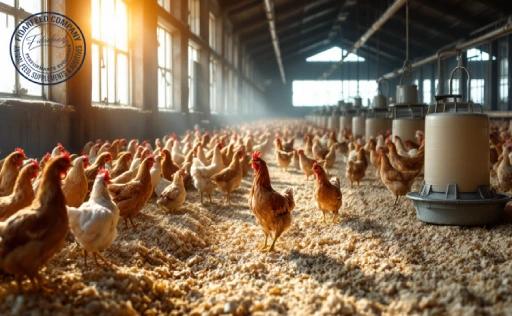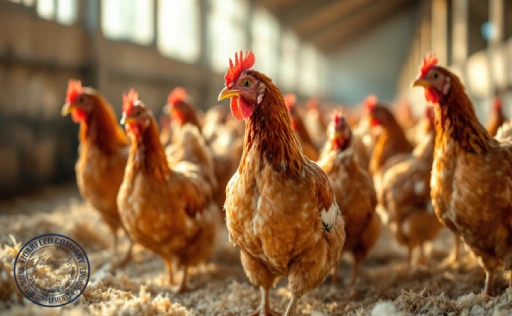Fish mortality is one of the most pressing concerns in aquaculture today. Whether you’re an experienced fish farmer managing a large operation or a newcomer taking your first steps in the industry, losing fish can be heartbreaking and financially devastating. After all the hard work and investment that goes into raising healthy fish, high mortality rates are more than just numbers on a chart; they’re setbacks that impact livelihoods, food supply, and sustainability efforts. Fortunately, there’s growing evidence that probiotics can play a crucial role in turning the tide. In this article, we’ll explore why fish mortality is such a challenge, how probiotics offer a practical solution, and the best ways to implement them in your aquaculture system. If you’re looking to reduce losses, boost fish health, and build a more sustainable future, read on.
Why Is Fish Mortality a Major Challenge in Aquaculture?
Fish mortality isn’t just a problem; it’s a persistent hurdle for fish farmers across the globe. According to the Food and Agriculture Organization (FAO), aquaculture loses billions of dollars every year due to diseases, poor water quality, and stress-related deaths. For small and medium-scale farmers, a single outbreak can be catastrophic. Pathogens like Aeromonas, Vibrio, and Streptococcus thrive in crowded conditions, leading to disease outbreaks that spread fast and wipe out entire populations.
Learn more about: Probiotic Supplement for Aquatic Animal
Beyond disease, factors such as poor nutrition, sudden changes in water temperature, and low dissolved oxygen levels further increase the risk of mortality. It’s a complex puzzle where every piece, from feed quality to water management, matters. And while antibiotics were once the go-to solution, their overuse has sparked concerns about antibiotic resistance, environmental damage, and stricter regulations in many countries.
Learn more about: Stress in Aquaculture: Understanding the Effects and Mitigation Strategies
This is where the search for safer, more sustainable alternatives comes in. Enter probiotics.
How Probiotics Improve Fish Health and Survival Rates
Probiotics, often described as “good” or “beneficial” bacteria, are living microorganisms that, when administered in adequate amounts, confer health benefits to the host. In aquaculture, they work by improving gut health, enhancing immune response, and maintaining water quality.
But how exactly do they reduce fish mortality?
First, probiotics outcompete harmful bacteria for space and nutrients in the fish gut. This phenomenon, known as competitive exclusion, limits the ability of pathogens to establish infections. For example, Bacillus subtilis, a widely studied probiotic strain, has been shown to inhibit Vibrio species, one of the primary causes of mortality in shrimp and fish farming.
Learn more about: Can Probiotics Really Boost Fish Growth in Aquaculture?
Second, probiotics produce substances like bacteriocins and enzymes that directly neutralize harmful microbes. They also boost the fish’s immune system by increasing levels of lysozyme and other immune-related enzymes. In simple terms, probiotics help fish fight back naturally, reducing dependency on antibiotics and chemicals.
A study published in Aquaculture Research in 2021 found that Nile tilapia fed with diets supplemented with probiotics had significantly lower mortality rates after being exposed to Aeromonas hydrophila, a common pathogen. The survival rate increased by up to 30% compared to control groups.
Key Benefits of Using Probiotics in Aquaculture
Reducing fish mortality is just the beginning. Probiotics offer a wide range of benefits for fish farmers:
- Enhanced Growth Performance: Healthier fish grow faster and more efficiently. Probiotics help by improving nutrient absorption and digestion.
- Improved Water Quality: Certain probiotics break down waste products like ammonia and nitrite, maintaining cleaner and safer water conditions.
Learn more about: Why Choose Prepared Feed for Your Farm Animals: Livestock, Poultry, and Aquaculture
- Stronger Disease Resistance: Probiotics stimulate both the innate and adaptive immune responses, making fish more resilient to infections.
- Reduced Antibiotic Use: By naturally controlling pathogens, probiotics minimize the need for antibiotics, reducing costs and compliance issues.
- Better Feed Conversion Ratios (FCR): Probiotics aid in digestion, leading to more efficient feed utilization, which can significantly reduce feeding costs over time.
Best Practices for Using Probiotics to Reduce Fish Mortality
Getting the most out of probiotics requires careful implementation. Here are some best practices to consider:
Choose the Right Strains: Not all probiotics are created equal. Select strains backed by research for your specific species. For example, Lactobacillus plantarum works well in tilapia farming, while Bacillus spp. are often used for shrimp and catfish.
Follow Proper Dosage Guidelines: More isn’t always better. Use recommended dosages based on manufacturer instructions or scientific studies. Overuse can disrupt microbial balance.
Incorporate into Daily Feeding: Probiotics are often mixed with feed or administered directly into the water. Ensure consistent application for the best results.
Learn more about: Daily Feed Prices for Livestock, Poultry & Aquaculture: Quality vs. Cost
Monitor Water Parameters: Probiotics perform best under optimal water conditions. Regularly check pH, temperature, and oxygen levels to support their efficacy.
Combine with Good Management Practices: Probiotics are not a silver bullet. They should be part of an integrated health management system that includes biosecurity, proper stocking density, and stress reduction strategies.
Success Stories: How Farmers Are Reducing Fish Mortality with Probiotics
Across the world, aquaculture operations are already reaping the rewards of probiotic use. Take the case of a tilapia farmer in Vietnam. Facing frequent disease outbreaks and high mortality, he decided to supplement his fish feed with a probiotic blend containing Bacillus and Lactobacillus strains. Within months, he noticed a dramatic reduction in losses and improved growth rates. His survival rates jumped from 70% to over 90%, and he cut back on antibiotics by 60%.
Learn more about: How Are Farmed Fish Fed? Understanding Aquaculture Feeding Practices
Similarly, a commercial shrimp farm in India introduced probiotics to manage water quality and disease control. The farm reported a 40% decrease in mortality rates over two growing cycles, with a noticeable improvement in water clarity and reduced ammonia levels.
These stories are not isolated. They’re part of a growing trend backed by scientific validation and practical success.
Final Thoughts: A Sustainable Future with Probiotics in Aquaculture
Reducing fish mortality is not just about profits; it’s about creating a more sustainable and responsible aquaculture industry. Probiotics offer a natural, effective, and science-based solution to one of aquaculture’s biggest challenges. By improving fish health, reducing disease outbreaks, and lessening environmental impacts, probiotics are helping shape a future where aquaculture can thrive without compromising animal welfare or ecosystem health.
If you’re a fish breeder, farm manager, or stakeholder in the aquaculture industry, now is the time to explore the potential of probiotics in your operation. Share your experiences, ask questions, and join the conversation below. Together, we can build a more resilient and sustainable aquaculture future.








